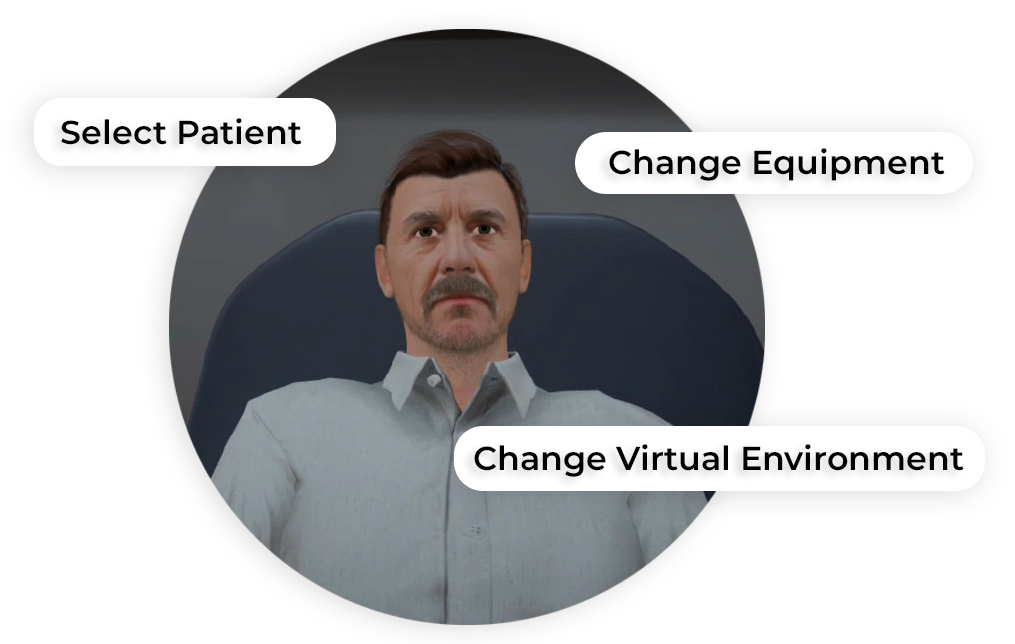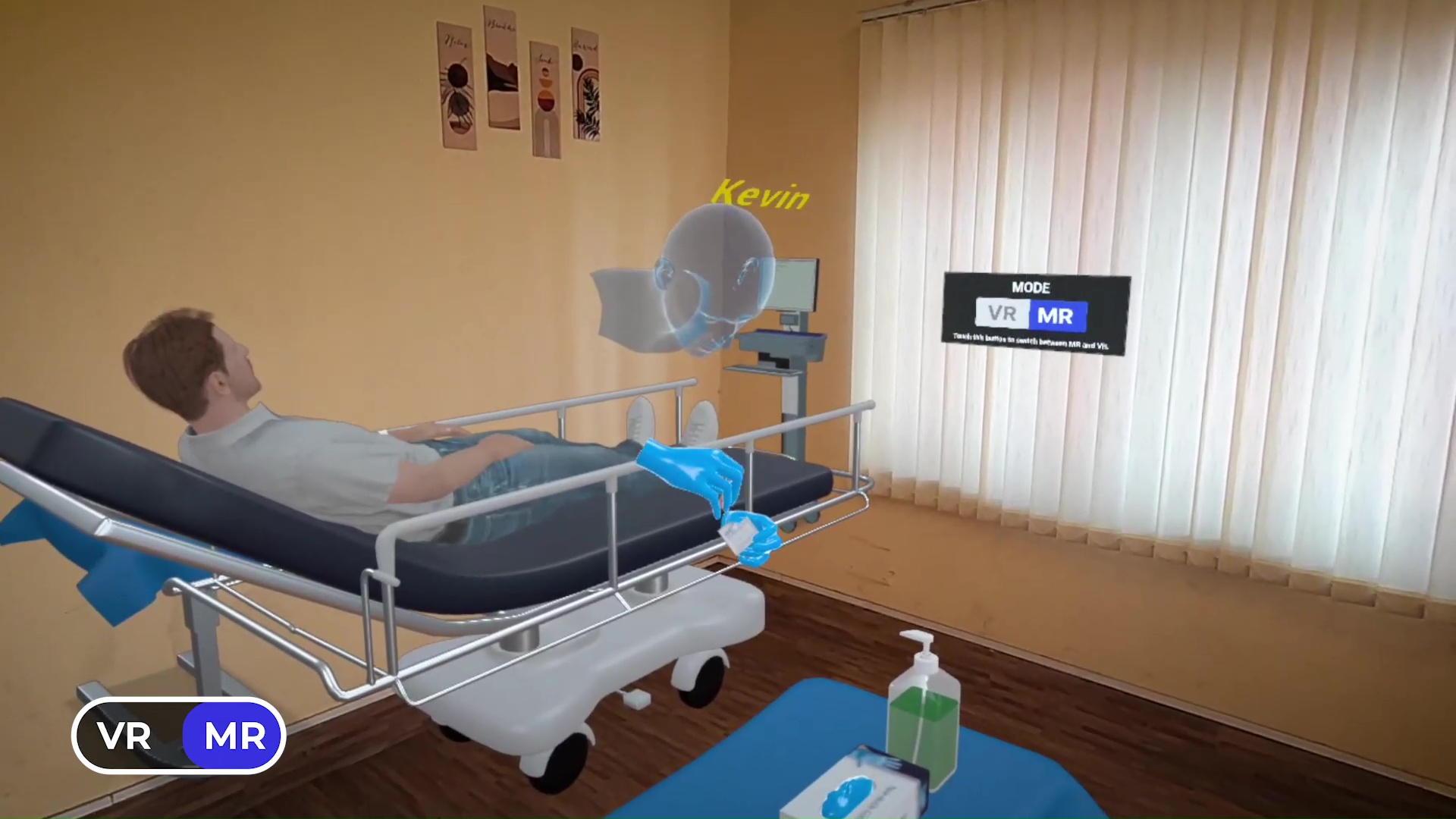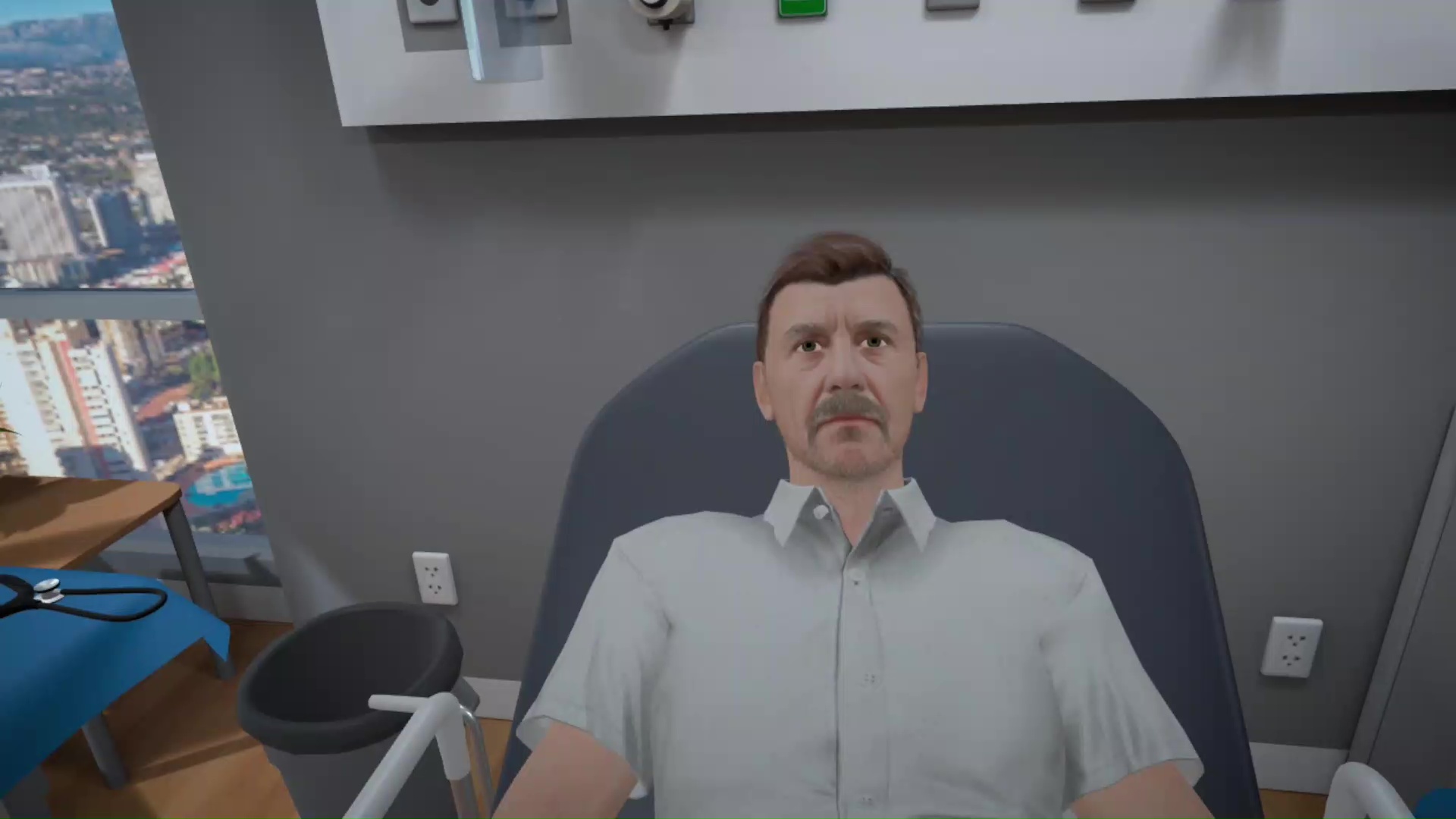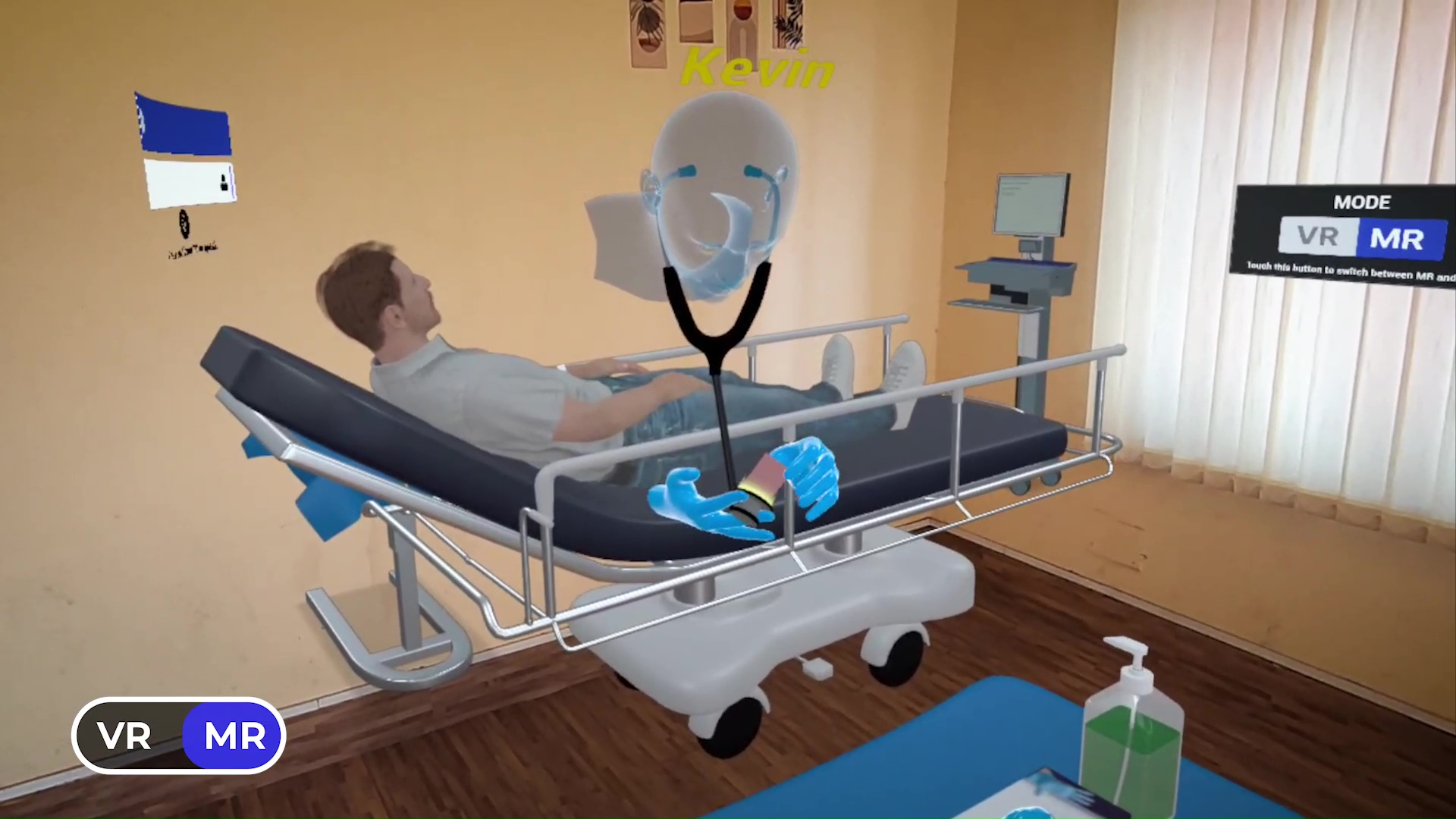Apical Pulse Assessment
Sixty-three-year-old Mr. Parsons has been experiencing shortness of breath for the past couple of days. He has also been experiencing a ‘fluttering feeling’ in his chest. Mr. Parsons is here for a check-up about his problem. This would require the healthcare professional to locate and listen to his apical pulse.
This VR simulation for Apical Pulse is designed to help healthcare professionals locate and listen to the apical pulse. With both training and assessment modes, learners can perform the procedure and assess themselves on their performance.
- Employ clinically approved method of finding the apical pulse
- Apply standard technique of listening to an apical pulse
- Educate the patient on investigation findings

- Accreditation Association for Hospitals and Health Systems. (2017). Standard 07.02.03. Healthcare Facilities Accreditation Program: Accreditation requirements for acute care hospitals. Chicago, IL: Accreditation Association for Hospitals and Health Systems. (Level VII)
Customize Your Program
Get rid of the editor. Adopt in-VR customization.
MedVR Education is bringing to you in-VR customization that will enable you to customize your procedural simulations by making selections from a range of feature choices.
- Select patient from a diverse background
- Choose preferred virtual environment
- Select equipment used in the procedure
- Modify difficulty level of the assessment mode
- …..many more to come

 Multi-playerSessions
Multi-playerSessions Physics-based Interactions
Physics-based Interactions
Core Skills Training

Listening to Apical Pulse
As a part of this Apical Pulse procedure, the user will begin by verifying the identity of the patient. The learner will enquire about any known allergies or adverse reactions and ask the patient to describe the problem. The learner will then inform the patient of the procedure and ask the patient to unbutton a couple of his shirt buttons. This is done to help the learner locate and listen to the apical pulse. After listening to the apical pulse, the learner will inform the patient of the findings.
All necessary affordances are provided to complete the procedure with efficiency.
Training
With prompts, guidance and affordances learners are hand-held through the process to practice the procedure in a virtual environment with a virtual patient.
- Photorealistic virtual environment
- Physics-based interactions
- Detailed instructions
- Adequate affordances to assist in task completion

Assessment
Test acquired skills to perform the procedures from start to finish without prompts. An incorrect step will take the learner back to the start to start afresh.
- Live scoring
- Instant feedback
- Adequate affordances for efficient performance
- Time tracking to monitor activity completion






